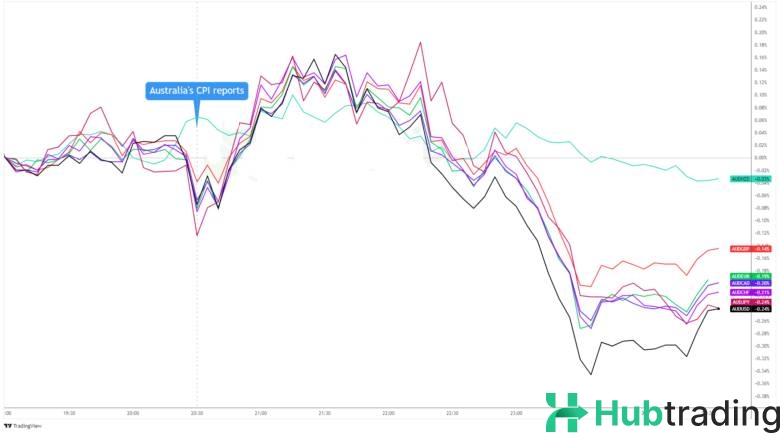Data from the Australian Bureau of Statistics (ABS) revealed that consumer price increases slowed from 1.0% to 0.2% in Q3 2024, falling short of market expectations of a 0.3% rise.
On an annual basis, Q3 CPI fell from 3.8% to 2.8%, staying above the Reserve Bank of Australia’s (RBA) 2%-3% inflation target midpoint.
ABS attributed the slowdown to “significant falls” in electricity and fuel costs, with electricity prices dropping 17.3% due to government subsidies and petrol prices falling 6.2% during the quarter.
The report highlighted that Recreation and culture (+1.3%), Food and non-alcoholic beverages (+0.6%), and Alcohol and tobacco (+1.3%) saw the largest increases. Government rebates on energy bills, introduced in July 2024, likely contributed to reduced household electricity costs.
Trimmed mean inflation, excluding volatile energy and fuel prices, declined from 4.0% to 3.5% in Q3. Services inflation, a focal point for the RBA, rose slightly from 4.5% in Q2 to 4.6% in Q3, maintaining an average of 4.5% over the past year.
In a separate release, the ABS reported annual inflation at 2.1% in September, down from August’s 2.7% rise. Trimmed mean inflation also slowed to 3.2%, compared to 3.4% in August.
According to the ABS, Food and non-alcoholic beverages (+3.3%), Alcohol and tobacco (+6.3%), and Housing (+1.6%) posted the highest price increases, though Transport prices declined by 3.8%, providing some offset.
Australian Dollar vs. Major Currencies: 5-Min Update

The Australian dollar began the day on a softer note after enthusiasm over China’s potential $1.4 trillion fiscal stimulus eased from the previous session.
The currency traded in narrow ranges ahead of the CPI report, surging higher when the annual Q3 CPI remained above the midpoint of the RBA’s 2%-3% target, in line with central bank expectations. The decline was largely due to reduced fuel costs and temporary government energy subsidies, while core components like services inflation remained elevated, underscoring the case for continued tight monetary policy.
AUD spiked across the board as traders speculated the report wouldn’t shift the RBA’s stance. However, the upswing was brief, with the Australian dollar hitting new intraday lows as broader risk aversion and caution ahead of key events later in the week tempered gains.





